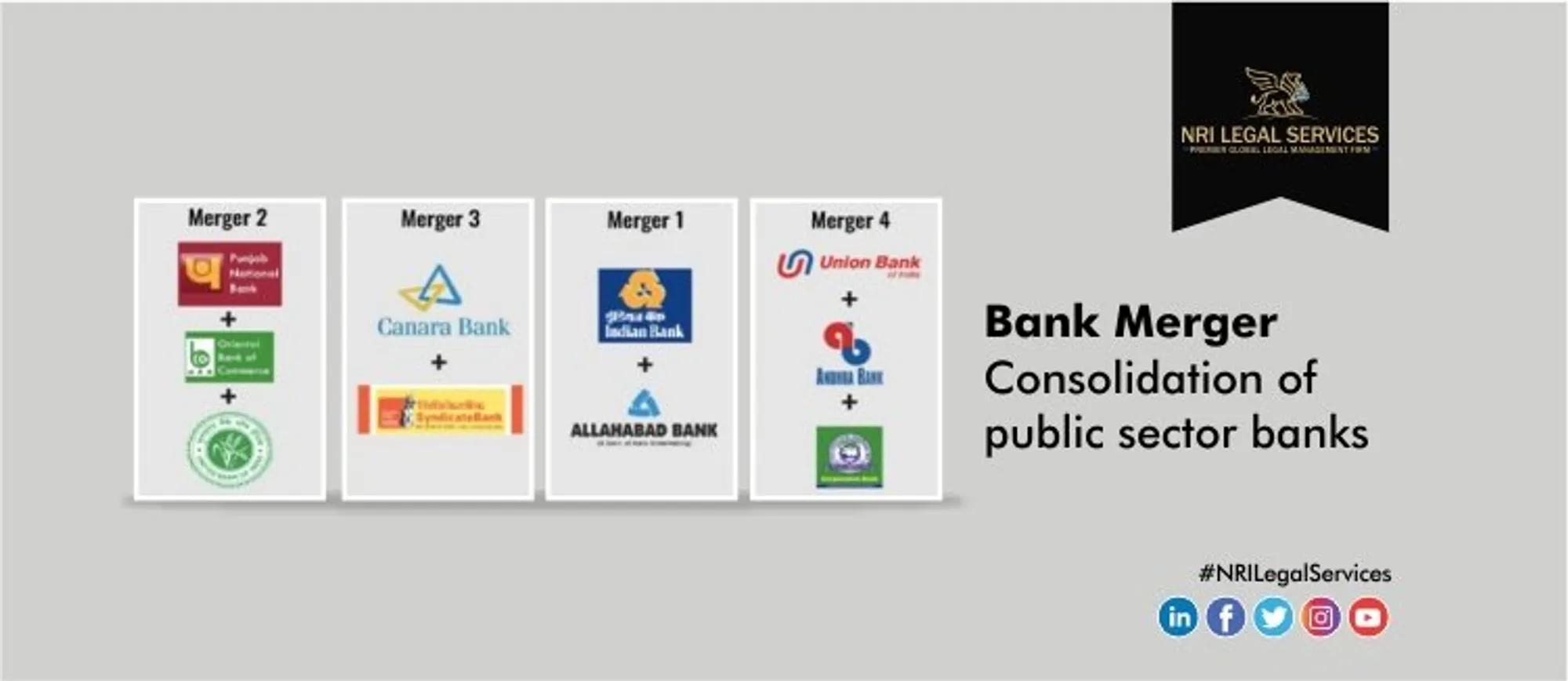COVID-19 has almost brought to halt everything in this world. The impact on the world economy as well as the Indian economy is expected to be huge.
However, it could not stop the Indian Government from implementing its decision for the merger of banks. Last year, the Finance Minister had announced the merger of ten Public Sector banks which has now come into effect from April 1, 2020. The number of Public Sector Banks in India has come down to twelve from twenty-seven.
Read: Corona crisis and stay at home – check your property documentation!
The ten Public Sector banks have been amalgamated into four banks which are:
- Oriental Bank of Commerce (OBC) and United Bank of India merged into Punjab National Bank.
- Syndicate Bank merged into Canara Bank.
- Allahabad bank merged into Indian Bank
- Andhra Bank and Corporation Bank merged into Union Bank of India
After the merger, the branches of the amalgamated bank are known by the name of the anchor bank (leading bank into which other banks have merged).
A merger is an exercise to consolidate banks which increases efficiency and reduces the operational cost of the resultant bank. The lending capacity of the amalgamated bank increases and there is a fall in NPAs.
Read: Useful Tips to Transfer a Property
Customers and borrowers have to take care of certain things:
- There may be a change in IFSC code and MICR code. Customers may have to make changes about auto credit and debit facilities linked to the account.
- For financial transactions like tax payment, insurance payment, loan repayment (EMIs) from the account, the new details need to be updated with the respective entities.
- A customer of the amalgamating banks must ensure that his latest address and other personal details as required by the bank are updated.
- There is an automatic transfer of the loan accounts. For borrowers of the amalgamating banks, the rate of interest on loan amount may change. However, no information yet in the case of the current merger.
- For FDs /RDs, the existing rate of interest continues until maturity. After that, the rate applicable in the amalgamated bank will apply.
- The number of branches of the anchor bank may increase. The availability of a branch in the vicinity may change. An area having branches of all the amalgamating banks will have a single or two branches of anchor bank as per the business requirement. It reduces the infrastructural cost.
To implement the said changes, the convenience and comfort of the customers are always of paramount consideration.
Mergers lead to surplus human resources, but the same can be utilized positively. Banks nowadays are performing various activities; pure economic as well as social. A bank account has been made mandatory for availing the benefits of welfare schemes of the Government. The workload on the employees has increased. The surplus manpower can be used to streamline it.
The current merger will lead to a strong banking establishment. Mergers are need of the hour.
NRI Legal Services is now on Telegram. Join NRI Legal Services channel in your Telegram and stay updated.

